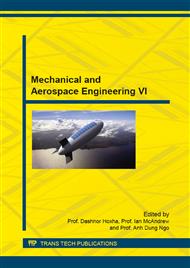p.256
p.261
p.266
p.271
p.276
p.282
p.287
p.292
p.297
Elimination of the Collision States of the Effectors of Industrial Robots by Application of Neural Networks
Abstract:
The article deals with the usage of methods of learning algorithms of neural networks for solving of collision states problem within multi-robotic cooperation. Nowadays, multi-robotic cooperation is a highly used method of work of two or more industrial robots. The requirements for elimination of collision states are getting more difficult when the multi-robotic system is more complicated. Methods of neural networks provide suitable tools for solving of complex cooperating problems. In the beginning of the article, we discuss the term “collision state” and the possibilities of its solving. In the following chapter, we discuss the theory of neural networks and learning algorithms, which we applied in solving of the collision states. In the final chapter, we implemented the practical verification of the model neural network in JSNN programme. It consisted of creating and learning of the training data and subsequent verification of the test data.
Info:
Periodical:
Pages:
276-281
Citation:
Online since:
October 2015
Authors:
Price:
Сopyright:
© 2015 Trans Tech Publications Ltd. All Rights Reserved
Share:
Citation:


